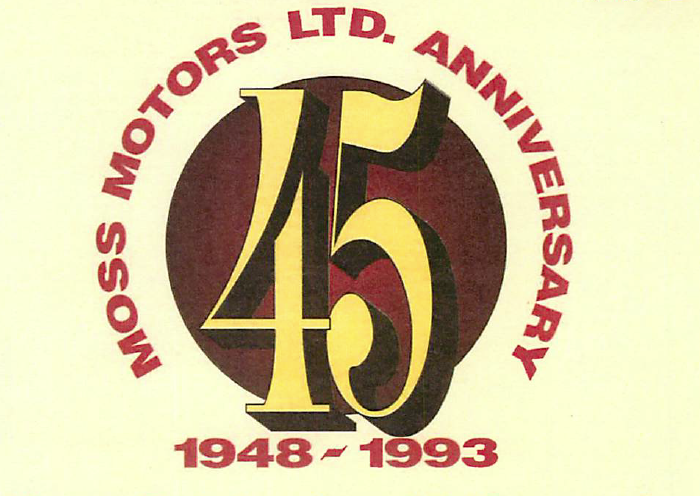More on Dust Valves
Tom Holdener
Pinole, CA
Tech Tip #58 (Summer 1992 Moss Motoring) makes a mountain out of a molehill. There is a much easier way to get the mud out of your dust valve. Simply “roto-root” the drain hole and tube, using a coat hanger wire or a welding rod and a cordless drill. Bend a small offset about 4-6″ from the end of the wire and fish it through the drain hole until it comes out the slit at the bottom of the tube. Pour some water (If It isn’t already full of it) down the air intake, while spinning the wire with the drill to flush the mud and junk out of it. It takes less that 5 minutes to do this, and I’ve done it about every other year for the last 12 years to prevent the problem.
Stuck Wire Wheels
Because servicing them is a dirty job, wire wheels are perhaps the most neglected components on a British car. Many times I’ve bought or worked on a car and found it nearly impossible to remove one of the wheels! This is likely due to very hard, dried-up grease which essentially freezes the wheel on.
I’ve heard about many techniques for removing stuck wheels with torches and chisels, and even trying to drive around without the knock-offs installed to loosen the the wheel. Before resorting to such drastic measures, try using a can of carburetor cleaner to dissolve dried up grease. Jack the car up, remove the knock-offs and spray well up into the cavity between the wheel hub and the splined extension. The carb cleaner will dissolve hardened grease in short order.
Be sure to place a pan or tray under the wheel to catch the dissolved grease and carb cleaner. Let the carb cleaner soak in for a few minutes and repeat the process while wiggling the wheel around to help break up hardened grease. Unless the splines have become jammed together on the extension, this will allow you to remove the wheel easily.
Common Rebuild Woes
Jack Shepard
Marion, NC
I came across a problem while rebuilding my Austin-Healey which I thought your readership might also experience at some time.
After driving my 1963 Austin-Healey for 21 years and putting on about 27,000 miles. I decided to restore it and put the Healey back into what I hope to be mint
condition.
I began the rebuilding process in 1985. I completely stripped the car of chrome, fenders, window, etc. What was mostly rotted out were the floor boards and frame rails. Working in mostly spare time, which wasn’t much, I re-welded parts back into place. Thank you, Moss, for being there with all of the spare parts, friendly counter service and advice.
While sitting there over the years on jack-stands, all of the brake and clutch fluid drained out (or disappeared somewhere). I know that I would need to rebuild the master cylinders. So I did, but when it came time to bleed the air from the lines. I couldn’t. Starting from the furthest most points, nothing worked. I pumped the master cylinders to no avail.
Here were the problems:
The clutch system turned out easy to fix because the bleeder screw was plugged with dirt. Therefore, loosening the screw did not permit the air, fluid (and dirt) to escape, permitting me to bleed the clutch system.
The brakes took a little longer, because 1 wanted to start bleeding the lines at the furthest wheel cylinder. Eventually, I closed off the rear cylinder, and started bleeding at the left front wheel cylinder. Voila! That line was filled with dirt, and by starting at that point, the brake system started to relieve Itself of air and dirt. From there, I had no problem bleeding the system, starting at the furthest wheel cylinder and working back toward the master cylinder. After repainting in July and reassembling the fenders, chrome, windows, etc.. this will be the year!
(If you suspect that the lines are partially or completely clogged with dirt, disconnect the lines al the wheel cylinders and or front brake hoses, and flush them with denatured alcohol. Best results are achieved when you can use an air compressor to blow the lines clear. If you place a small piece of tubing on the master cylinder end of the line, you can press the end of the air nozzle against the tubing —Ed.)
Damp Starting Problems
Tom K’Burg
Salem, NJ
If your car is still slow starting, or a no start in wet/damp weather, and you have checked and convinced yourself that your battery is strong, the grounds and hot connections arc all good, timing, plugs, and points are all up to specs, it is now time to go to the next step. You should seriously consider replacing your old. probably weak and/or worn out stock 25k coil with a new, high voltage 35k or 40k volt coil. They are available at reasonable prices. If you are a purist, rest assured that the Lucas Sports Coll (Moss #143-200). Is still available, although not originally fitted at the factories. Most likely if all the other electrical stuff is working well, you will solve your wet/damp starting problems with a high voltage coil.
Try it, and if you are like me, you will wonder why you or Lucas didn’t do it 20 years ago.





'Tech Tips: Spring 1993' has no comments
Be the first to comment this post!